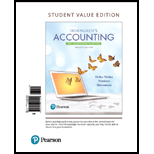
1)
Journal:
Accounts are debited to increase balances of assets and expenses and credited increase the balance of incomes and liabilities
To Prepare:
Journal Entries for November and December 2018.
2)
T- Account
It is a graphical representation of the postings made to the accounts during a reporting period.
It helps in analysis of the transactions impacting the accounts.
To Prepare:
T-Accounts for each of the entries.
3)
T-Account:
It is a graphical representation of the postings made to the accounts during a reporting period. It helps in analysis of the transactions impacting the accounts.
To indicate:
Posting to T-Accounts
4)
A trial Balance is a list of the balances of various Assets, Liabilities, Expense and Revenue Accounts. It helps in evaluating the arithmetical accuracy of financial transactions and postings during a reporting period and serves as the starting point in the preparation of financial statements.
To prepare:
Trial Balance as at 31 December 2018
5)
Financial Statements of an Entity
Financial Statements are financial records of the entities transactions for a given reporting period and indicate the financial health of an entity. They comprise of:
1. Income Statements,
2. Balance Sheets and,
3.
Prepare Income Statement for the year ended 31 December 2018.
6)
Statement of Owner’s Equity.
A statement of owner’s equity is a representation of all the capital introduced and withdrawn during a particular reporting period. It also represents the closing balance of the capital invested in a business.
To prepare:
Statement of Owner’s Equity for the year ended 31 December, 2018,
7)
Financial Statements of an Entity
Financial statements are financial records of the entities transactions for a given reporting period and indicate the financial health of an entity. They comprise of:
1. Income Statements,
2. Balance Sheets and,
3. Cash flow statements.
Balance Sheets list the closing balances of assets and liabilities after giving effect to the operations for a reporting period. Assets and liabilities are grouped together based on their nature and life.
To prepare:
8)
Debt Equity Ratio
It is a measure of the proportion of how much debt has been used to finance the equity and operations of the business.
The lower the ratio the better. Higher Debt equity ratio represents a highly leveraged business and can also indicate higher interest payments and lower profitability.
The Debt Ratio for the year ended 31 December 2018.
Want to see the full answer?
Check out a sample textbook solution
Chapter 2 Solutions
Horngren's Accounting: The Managerial Chapters, Student Value Edition (12th Edition)
- Manzer Enterprises produces premier raspberry jam. Output is measured in pints. Manzer uses the weighted average method. During January, Manzer had the following production data: Units in process, January 1, 60% complete - 36,000 pints Units completed and transferred out - 243,000 pints Units in process, January 31, 40% complete - 65,000 pints Costs: Work in process, January 1 - $54,000 Costs added during January - 344,000 Calculate the unit cost for January. Round your answer to the nearest cent.arrow_forwardGeneral Accounting Questions # answerarrow_forwardUse the following information to calculate cash paid for income taxes... Please answer the general accounting questionarrow_forward

 AccountingAccountingISBN:9781337272094Author:WARREN, Carl S., Reeve, James M., Duchac, Jonathan E.Publisher:Cengage Learning,
AccountingAccountingISBN:9781337272094Author:WARREN, Carl S., Reeve, James M., Duchac, Jonathan E.Publisher:Cengage Learning, Accounting Information SystemsAccountingISBN:9781337619202Author:Hall, James A.Publisher:Cengage Learning,
Accounting Information SystemsAccountingISBN:9781337619202Author:Hall, James A.Publisher:Cengage Learning, Horngren's Cost Accounting: A Managerial Emphasis...AccountingISBN:9780134475585Author:Srikant M. Datar, Madhav V. RajanPublisher:PEARSON
Horngren's Cost Accounting: A Managerial Emphasis...AccountingISBN:9780134475585Author:Srikant M. Datar, Madhav V. RajanPublisher:PEARSON Intermediate AccountingAccountingISBN:9781259722660Author:J. David Spiceland, Mark W. Nelson, Wayne M ThomasPublisher:McGraw-Hill Education
Intermediate AccountingAccountingISBN:9781259722660Author:J. David Spiceland, Mark W. Nelson, Wayne M ThomasPublisher:McGraw-Hill Education Financial and Managerial AccountingAccountingISBN:9781259726705Author:John J Wild, Ken W. Shaw, Barbara Chiappetta Fundamental Accounting PrinciplesPublisher:McGraw-Hill Education
Financial and Managerial AccountingAccountingISBN:9781259726705Author:John J Wild, Ken W. Shaw, Barbara Chiappetta Fundamental Accounting PrinciplesPublisher:McGraw-Hill Education





